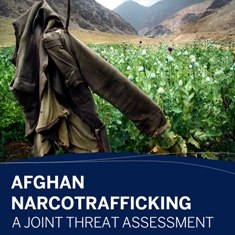This month Kyrgyzstan celebrates the third anniversary of the overthrow of country’s second president, Kurmanbek Bakiev, which led to major changes in the country’s structure of governance. Three years on, a more inclusive political power sharing system appears to remain the key tentative achievement of the “April Revolution.”
One can indeed observe a drastic difference in the way political governance is set up. In direct contrast to pre-2010, the current parliament features five political parties that are relatively independent of each other and have a comparable number of seats. The party factions are gaining some experience in alliance-building measures. The current cabinet is the result of a third coalition attempt in the Kyrgyz parliament. There is virtually no talk of “family rule” or “the president’s family,” which was strongly present in the past.
There are some troubling observations however. One is a concern over the quality of the institutions that are expected to drive the “parliamentary government.” None of the party factions in the parliament maintained itself as a coherent and vision-guided group. Several factions are divided into smaller groups, making “party” and “faction” rather irrelevant terms. Government insiders often complain openly that the coalition-based government is a collection of individuals with their own interests and priorities rather than a team of like-minded policy-makers. The 2012 local elections and resulting local coalitions suggest the central and local branches of political parties have different and often contradicting coalition preferences, which just highlights that nature of today’s parties.
Therefore, the parties may require more than a few rounds of free and fair elections to become strong and solid political actors. Relying on the new constitution and rules of the game is certainly not sufficient. In terms of incentives for parties, the 2007 constitution was actually not very different from the current one, but, still, it led the president’s Ak Zhol party to control over 70% of the parliament. The key difference between 2007 and 2010 was the absence of a strong incumbent able and willing to manage the election results. To suggest some optimism, President Atambaev recently claimed that next elections would be the cleanest ones yet.
A more comprehensive assessment of April 2010 will certainly be coming in the future, as the political, economic, foreign policy and other trends get identifiable. In the meantime, one may take note of two mega projects of the Kyrgyz government interesting enough to follow: the renewed efforts to renegotiate the investment terms with Centerra Gold on Kumtor gold mine and the renewed efforts to attract Russian investments to construction of Kambarata hydropower plants in exchange for removing the U.S. military airbase from Manas airport. Both projects had recently been attempted by the previous regime, though with different success and implications.
Shairbek Juraev is the deputy director of the OSCE Academy in Bishkek. He blogs for PONARS Eurasia on Central Asian issues. The comments made and views expressed are solely the responsibility of the author.










